- Author: Brenda Dawson
Though growers can earn retail prices at farmers markets, many farmers find their profits challenged by the additional marketing costs required, such as transportation and staff time. But one farmers market has developed a way that it can help farmers sell higher volumes to multiple buyers with just one trip — by serving as a venue for sales to restaurants and wholesale distributors, in addition to individual customers.
The Santa Monica Farmers Market hosts 75-80 farmers every Wednesday and could very well be the nation's largest "wholesale farmers market." Laura Avery, farmers market manager, gave a presentation about sales to chefs and professional produce buyers at the California Small Farm Conference.
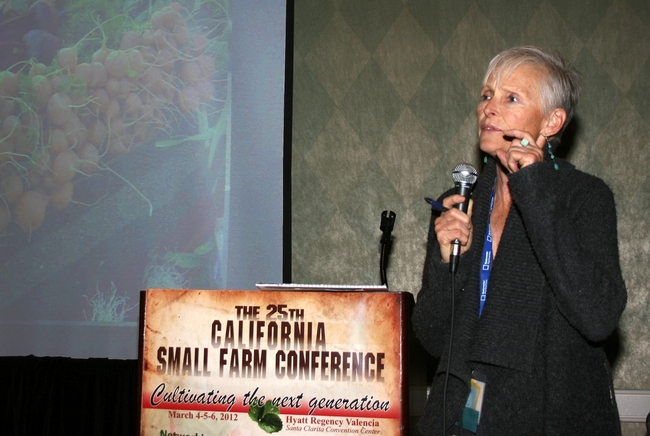
"We allowed it to progress organically," Avery said. "This happened by itself — just people doing what they want to do and getting what they want to get."
She said that a recent survey of professional produce buyers at the market found that they shop for 5-25 customers each week and have been sourcing from the market for 5-15 years. They reported average produce sales of $1,000 to $4,000 each week from the farmers market.
In one of its few concerted efforts to facilitate these sales, the market has designated parking for chefs and produce companies. Avery said some of the trucks will load up and return multiple times over the market's four hours.
A grower's perspective
Jerry Rutiz has been selling to restaurants at the Santa Monica Farmers Market for 29 years. He grows vegetables, berries and flowers on 28 acres in Arroyo Grande and also operates a CSA and farm stand.
"About 70 percent of what we bring to the farmers market is sold to restaurants," Rutiz told conference participants.
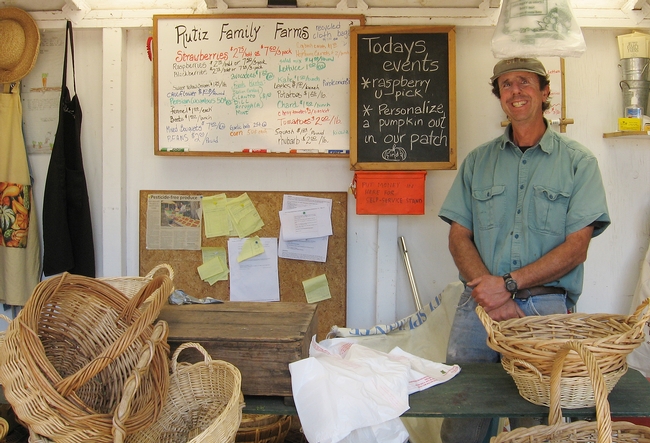
He provided some tips for farmers who want to sell to restaurants and develop relationships with chefs.
"Ask the chef what he wants or can't get," Rutiz said. "Don't expect to sell cabbage or white cauliflower to a restaurant, but if you can bring purple, orange or green cauliflower — that can differentiate you and can help differentiate their restaurant from other restaurants."
Also: "Restaurant prices have no consequence with wholesale prices of the moment," he said. "Price is not the biggest criteria, quality and consistency are."
Though Rutiz has found success with chefs, restaurant sales aren't the focus of all farmers at the Santa Monica market.
"We figure about 25 percent [of produce sold at the Wednesday market] is restaurant wholesale," Avery said. "Some farmers like Jerry sell a majority to restaurants, but some sell just to customers and not to restaurants."
Complications

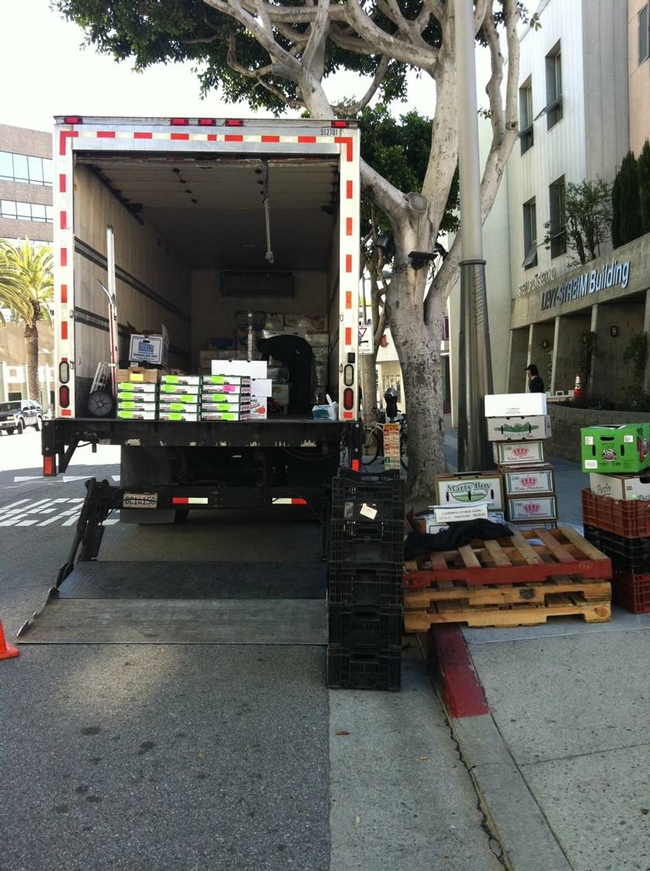
"This is enterprise that takes place on the sidewalk behind the trucks, not in front of the tables where the public buys," Avery said.
Sales to distributors must adhere to wholesale size and pack regulations, though recent state legislation (AB 2168) allows chefs and restaurants to purchase exempt produce directly from farmers.
Rutiz said complications can arise if, for example, a restaurant agrees to buy all of a particular product — the same product that a traditional farmers market customer wants to buy from him.
"The trick is to cover up the produce [that's already sold] or leave it up in the truck. Or have a little stash of strawberries on the side and act like you're doing them a favor," he said.
What it means for buyers
The topic of farmers markets as a venue for wholesale produce buyers came up during another workshop at the conference as well. Karen Beverlin, vice president of specialty sales for FreshPoint, said her company buys from 28-35 farmers every Wednesday in Santa Monica.
"Farmers markets are huge for our company to meet small farmers," Beverlin said. "It's really helped us basically be an aggregator … and meet farmers who we might not have otherwise met."
As a market manager, Avery sees these additional sales at the market as another means of facilitating sales between farmers and consumers.
"The impact of the restaurants and produce companies is we have now established sales levels consistently that are as high as the highest day used to be," Avery said. "The bottom line is we're trying to get the product from the farm to the customer at a good price."
Advice for farmers market managers
For growers and market managers who are interested in developing their farmers markets as a hub for chefs and professional buyers, Avery offered these additional tips:
- Encourage your local media to do a story about a farmer and a chef who shops at the market.
- Understand from chefs which day(s) they need to shop and direct them to the closest market on that day.
- Encourage farmers to produce an availability list that they can email out to chefs on a weekly basis.
- Talk to produce companies about a restaurant that you know might be interested in farmers market produce, and encourage the produce company to drop off samples at the restaurant. This can lead to follow-up orders.
Back to the newsletter: Find more Small Farm News articles from our Vol 1. 2012 edition.
- Author: Brenda Dawson
California growers considering organic certification were able to hear about the value of doing so — and tips for getting started — from a farmer, buyer and agricultural economist at one of the California Small Farm Conference workshops.
“I had about a thousand customers per week at the farmers market, pulling up my carrots and saying, ‘Are these organic?’ And I got tired of that question,” said farmer Phil McGrath, about one of the many reasons he chose to grow organically.
McGrath and a produce buyer he works with both talked about the importance of “telling your production story” as a marketing tool, and said having the certified-organic label helped.
“We feel that it’s easy for consumers to wrap their heads around ‘organic.’ They think they know what it means,” said Karen Beverlin, vice president of specialty sales for FreshPoint. “The labels give us something to hang on [McGrath] and his product, but then it's up to us to tell the story of how that's so different.”
One of the things that sets McGrath apart from some other farmers is his emphasis on diversified farming. His main piece of advice for budding organic farmers is growing organically is easier on a diversified farm. McGrath Family Farms grows mixed vegetables, strawberries, heirloom tomatoes, pumpkins and cover crops.
“If you're going to be an organic farmer, it's hard to grow just one thing,” he said. “It’s a kick to be this diversified – it really does make you a stronger farmer. I grow more things in season, I use a normal amount of water and I’ve stabilized my labor demands. I have very few pest problems; probably my first [main pest] would be birds, next would be mammals.”
Karen Klonsky, UC Cooperative Extension agricultural economist at UC Davis, explained the basics of organic certification and the organic market.
“California dominates organic production nationwide,” she said.
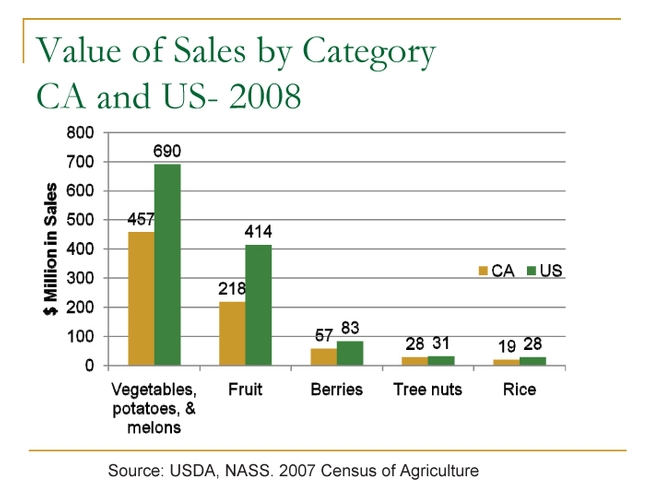
Organic production includes following USDA’s National Organic Program, with no prohibited substances for at least three years — including synthetic substances not on the national list, genetic engineering and sewage sludge. Farmers selling more than $5,000 per year must be certified to call their produce organic. The process to get certified involves preparing an organic system plan, recordkeeping and an annual inspection. Klonsky explained that there are 25 USDA accredited certifiers active in California.
“All of the rules being followed are the same by any certifier,” she said. “How they do differ is whether they’re nonprofit, for-profit, a government agency, etc.”
Though costs and fee structures vary, all of the certifiers charge for the application, inspection and certification. Some certifiers also have trade associations, play political roles, offer educational programs or have specialized services and expertise.
Klonsky said that growers should plan for the certification process to take 8-12 weeks, though many certifiers offer expedited programs at an additional cost.
“That's something to ask a certifier: Once I get you my paperwork, how soon until you'll visit my farm and I'll be certified?” Klonsky said.
The certifier’s inspection will review and verify your farm’s organic system plan (OSP), with a facility tour including any storage and processing, all records pertaining to organic production and practices and an audit trail with a balance of inputs and outputs.
Klonsky recommends setting aside time, work space and relevant staff members for the inspection. Any changes to labels or systems should be submitted to the certifier prior to the inspection, to save time and confusion. (View Klonsky's presentation and others from the conference.)
Resources recommended by Klonsky:
- ATTRA, the National Sustainable Agriculture Information Service provides information for organic production, marketing, databases, and certification information
- The Organic Trade Association works with U.S. organic industry to support and grow organic.
- The National Organic Program has monthly reports, policy updates, list of U.S. certifiers
- CDFA Organic Program has information on registration, cost share for certification and accredited certifiers in California
- Organic Materials Review Institute (OMRI) is the U.S. gold standard for materials review and information
Back to the newsletter: Find more Small Farm News articles from our Vol 1. 2012 edition.
- Author: Brenda Dawson
With the growing popularity of community supported agriculture has come a proliferation of CSA models, with a wide variety of structure, goals, customer interactions and food products. Two different CSAs offered tips to farmers and workshop participants at the California Small Farm Conference.
On the panel were John Fonteyn and Elizabeth Del Negro, who operate Rio Gozo Farm in Ojai on 3.5 leased acres as the sole employees.
Also on the panel was Sarah Nolan, the CSA coordinator for South Central Farmers Cooperative, which farms 85 acres in Buttonwillow and delivers to locations throughout the Los Angeles basin.
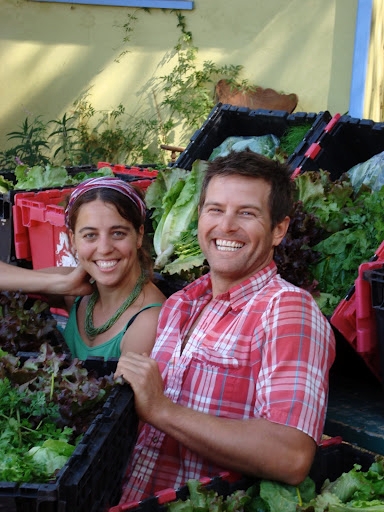
“I think it’s important that we focus on the community aspect of community supported agriculture,” Fonteyn said. “I didn’t want to just put food in boxes and put them in trucks and send them away. I really wanted to live in a community.”
He believes that many CSA member also seek a sense of community and want to be part of building that community themselves. Many of their CSA members volunteer to pack boxes and visit the farm at other times too.
Fonteyn thinks that being likeable as a business person and farmer can go a long way.
“People go to you because they like you,” he said. “It’s really an attachment to us, our goals, our approachability.”
They also make concerted efforts to stay in the public eye.
“We say yes as often as we can,” Del Negro said, listing on-farm dinners, fundraisers, partnering with chefs and entertainers, speaking at events, providing farm tours and cooperating with media members as things they “say yes” to in order to maintain a strong community presence.
Rio Gozo also has an online presence, through a blog, Facebook and Twitter.
“When people search for farms, they want to see beautiful images,” Del Negro said. “When you go on our website, you’ll see deep colors, sharp photos and very few words.”
Retention
Rio Gozo initially offered monthly, seasonal and annual memberships, but have shifted away from offering monthly subscriptions — which has increased their membership retention.
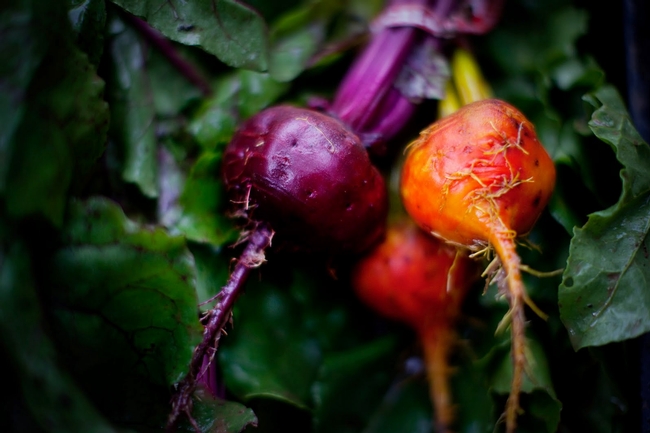
The South Central Farmers Cooperative offers boxes on a one-time basis, in addition to offering monthly and seasonal subscriptions. Though they deliver about 300 boxes per week, they have about 500 customers per year receiving a box at one time or another.
“A lot of your work as a CSA is to throw that broad net out to get more people,” Nolan said. She described a 60 percent attrition rate for CSAs on average as normal.
But, she said, it’s also important to form relationships with customers, so that people who might be inclined to continuing their membership with the CSA do indeed stay on.
Since the South Central Farmers Cooperative also sells at farmers markets, Nolan said they make a point of trying to help customers self-assess whether a CSA is right for them.
“[Consumers] need to figure out — are you a CSA person or a farmers market person?” she said.
Planting
They each offered these general tips about what to grow:
- “Plant as many varieties as possible because CSA members want variety in their boxes, and if you’re not aggregating, then you need to grow it,” Del Negro said.
- “We try to grow as much as possible on our own farm,” Nolan said. “We do partner with other farms and we are very clear with CSA members about who we’re partnering with and what’s going on.”
Regulation
Dave Runsten, of Community Alliance with Family Farmers, spoke up to explain that the California Department of Food and Agriculture is currently working on issues related to direct marketing, including CSAs and how CSAs relate to food safety.
One of the concerns discussed related to food safety for CSAs is controls for “potentially hazardous foods,” which is a regulatory term that can refer to food products that cannot be safely held without temperature controls.
“So the extent that you don’t include potentially hazardous foods in your CSA box, then you won’t be subject to those handling requirements,” Runsten said.
Other concerns related to food safety and CSAs might include the CSA boxes themselves, whether they are cleaned or use a liner, and traceability of product through CSA channels.
Runsten said he maintains an email list of CSA operators in California, as a source for advice and opinions. CAFF is also planning a conference focused on CSAs in January 2013.
Back to the newsletter: Find more Small Farm News articles from our Vol 1. 2012 edition.
- Author: Brenda Dawson

"You will double your production! And you will have no pests, no diseases," he said, emphatically promoting an unnamed agricultural product to the audience gathered.
"You ask me, how can you afford this product? I ask you, how can you not afford it?" he said.
After his roaring introduction to participants at the California Small Farm Conference, the presenter Jim Downer, UC Cooperative Extension advisor in Ventura County, proceeded to explain the real purpose behind the workshop session. His presentation wasn't about selling a product, but about cutting through promotional language to avoid wasting money on ineffective products.
"I guess what this talk is really about is knowing when you're being sold and when you're buying a product that can help," he said.
Downer explained that many ineffective products make scientific-sounding claims, but often cite studies that are nonexistent, unpublished or even unrelated to the product. He reminded the audience that any product claiming to control a pest — but not registered as a pesticide — is illegal.
"It is a violation of state and federal laws to apply products as pesticides when they are not labeled for that use," he said.
He also specifically addressed:
- Mycorrihizal fungi
- Biological control
- Soil Food Webs
- Compost teas
- Vitamin B-1
- Horticultural myths
Downer has written an informative article about recognizing horticultural "miracle products" and urban legends in Topics in Subtropics. In the article, he explains:
"Snake oil products almost always offer numerous testimonials to support their use. Those who provide testimonials are usually not researchers. Professional horticulturists, farmers and gardeners should be able to recognize snake oil products and avoid their use—we should base our horticultural decisions on sound research based information, not on marketing claims and testimonial based admonitions."
Read the rest of Downer's article "Snake Oil, Horticultural Myths, Horticultural Urban Legends, and Persuaders in our Industry."
Back to the newsletter: Find more Small Farm News articles from our Vol 1. 2012 edition.
- Author: Brenda Dawson
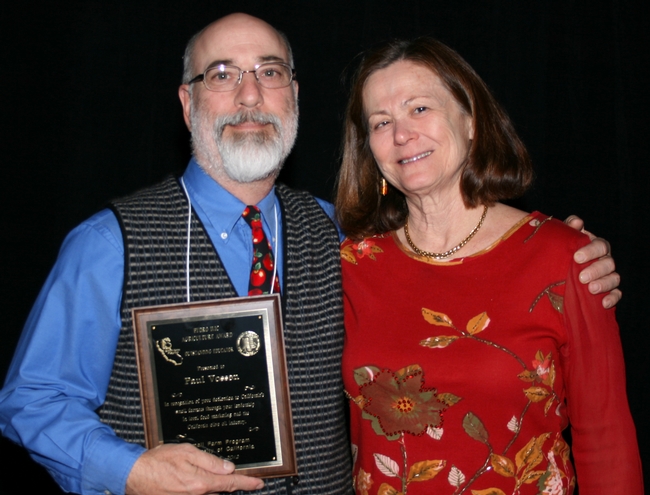
Paul Vossen, UC Cooperative Extension advisor in Sonoma and Marin counties, accepted the award on March 5 at the California Small Farm Conference in Valencia.
"Paul has contributed tremendously to the success of the growing California olive oil industry," said Shermain Hardesty, who presented the award and is director of the UC Small Farm Program. "Paul helps farmers connect with consumers who are willing to pay the price premiums necessary for their high-quality products. And he was one of the first to recognize 'local' as a marketing attribute."
Vossen is one of the founders of the UC Davis Olive Center. He was also instrumental in the first organic production manuals published by the university, which were for apples and olives. He conducts field research on specialty crops, including tree fruit, berries and vegetables, to share with farmers in his region and throughout California.
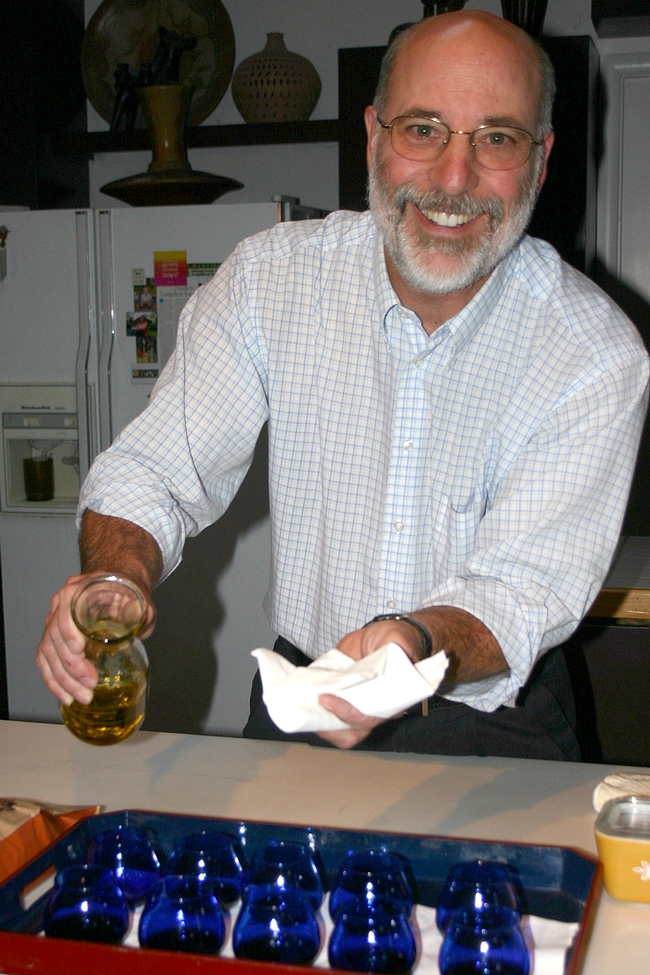
"Paul Vossen has passion, energy and enthusiasm for his profession and his clientele," they wrote. "He easily moves from teaching farm workers to discussing olive oil production with an olive grower visiting from Spain."
Vossen knew and worked with the award's namesake, Pedro Ilic.
"One of the really neat things about Pedro was that he was so passionate about the small farmer, and I really think that's why this award lives on," he said. "He was such a hard worker and so dedicated to the small farmer."
Ilic's untimely death in 1994 prompted the UC Small Farm Program to annually honor those who carry on his legacy of personal commitment to small-scale and family farming. Ilic was a UC Cooperative Extension farm advisor in Fresno County and one of the original advisors of the Small Farm Program when it was established in 1979.
Read more about the Pedro Ilic Awards, including previous honorees and the nomination process.
Back to the newsletter: Find more Small Farm News articles from our Vol 1. 2012 edition.


